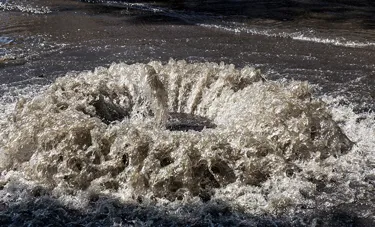
Wastewater Case Study: Preventative Maintenance in Erie, Pennsylvania
Customer Overview
The city of Erie, Pennsylvania, manages a complex sewer system that includes 650 miles of sewer lines and 13 pump stations. Facing ongoing budget challenges, the Public Works Department has seen its workforce decrease from 25 employees to just 14.



The Challenge
Erie’s Public Works Department had been struggling to stay ahead of root growth within their sewer lines, a problem complicated by budget constraints and a shrinking workforce. The city also faced combined sewer overflow (CSO) issues and residential backups, which threaten to overwhelm the aging infrastructure and disrupt service to residents.
SOLUTION / SERVICE
To mitigate these challenges, Erie’s Public Works Department integrated Duke’s into its ongoing preventative maintenance efforts. This partnership has been vital, particularly given the reduced number of staff, as it has allowed the city to shift focus from reactive to more proactive maintenance. The program has significantly reduced sewer backups, providing the department with much-needed peace of mind and operational stability.
IMPLEMENTATION
The preventative maintenance program with Duke’s began in 1983 and has been a cornerstone of Erie’s sewer management strategy ever since. Over the years, Erie has continuously refined the integration of innovative services developed and enhanced by Duke's to better manage root growth and grease accumulation in sewer lines. This long-term approach has ensured that even with reduced staffing, the city can maintain a high standard of service.
RESULTS
The results of this sustained effort have been impressive. Erie has seen a substantial reduction in sewer backups, which has alleviated pressure on the limited workforce and allowed for more strategic planning of maintenance activities. With the assurance that treated lines are less likely to experience issues, the department can focus on other critical infrastructure needs, providing confidence that their preventative measures are effective.

